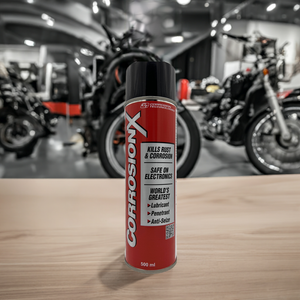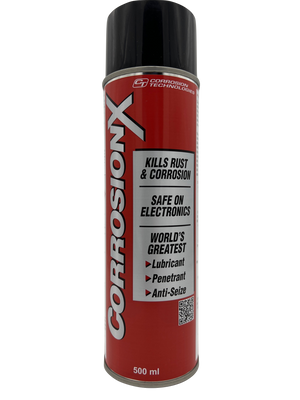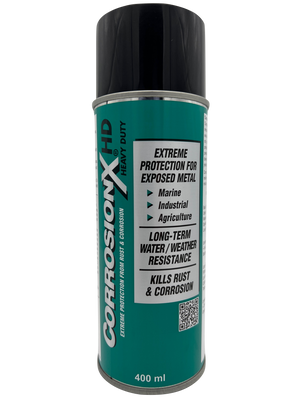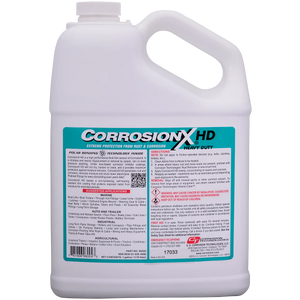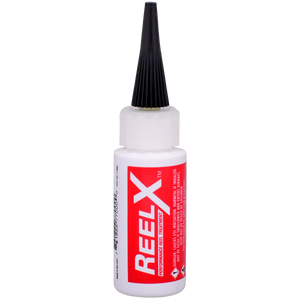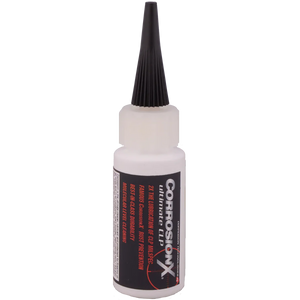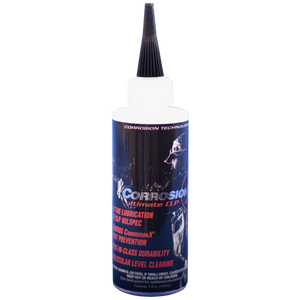Saltwater. Humidity. Relentless exposure to the elements. If you’ve ever set foot on a naval vessel—or even glanced at one docked in a harbor—you’ve seen firsthand how harsh the marine environment can be. The combination of salt spray and high humidity can eat through steel like a ravenous sea monster, leaving rust, corrosion, and costly damage in its wake. Now, imagine the stakes when it comes to maintaining naval cannons: these massive guns aren’t just ornamentation; they’re critical defensive and offensive assets that need to be in top operational form at all times. A single jam or mechanical failure could jeopardize an entire mission.
In this extensive guide, we’re going to dive deep into the ins and outs of saltwater corrosion, why ordinary gun oils simply can’t stand up to these conditions, and how specialized products like CorrosionX for Guns and CorrosionX HD can extend the lifespan of your naval artillery. We’ll walk you through every facet of maintenance, from cleaning and prep to routine reapplication, and show you how to keep your cannons as ready and reliable as they were on day one. Ready to learn how to fend off the relentless assault of the sea? Let’s weigh anchor and set sail into the world of naval cannon care.
Understanding the Menace of Saltwater Corrosion
Saltwater and Metal – A Perpetual War
Saltwater is, quite frankly, a metal’s worst nightmare. It’s like a double-edged sword: water helps transport oxygen to the metal surface, while salt accelerates the electrochemical reactions that result in rust. These reactions can happen astonishingly quickly in a maritime setting. If you’re picturing a slow process that takes years to turn shiny steel into a flaky, reddish-brown husk, think again. In the presence of salt, corrosion can emerge in weeks—or even days—when left unchecked.
But why exactly is salt so corrosive? Salt dissolves into sodium and chloride ions, which drastically increase the conductivity of water. Metal objects in contact with this electrically charged fluid are prone to accelerated oxidation. It’s a bit like adding a booster rocket to the normal rusting process. Metals that might otherwise hold up well in drier environments quickly corrode in an endless cycle of exposure, oxidation, and decay. If you could see these reactions at a microscopic level, it would look like a swarm of tiny piranhas gnawing away at the metal’s protective outer layers.
For naval cannons, which are often composed of steel alloys and other specialized metals, the threat is magnified by the sheer scale of exposure. Cannons typically sit on open decks or in turrets that are continually sprayed with sea mist and battered by waves during rough weather. Rust not only damages the surfaces we can see; it can creep into barrels, breeches, and the myriad mechanical parts that make a cannon function. Left unchecked, this invasion can compromise firing accuracy, reduce range, and eventually render the artillery inoperable.
Humidity – The Silent Partner in Crime
While saltwater gets most of the attention, humidity is like the lesser-known accomplice quietly aiding and abetting corrosion. Even if a cannon isn’t directly sprayed with ocean water, the water vapor in the air is enough to set off the oxidation process. High humidity means there’s always moisture available, ready to condense on metal surfaces. Even tiny droplets that you can’t easily spot with the naked eye can start the corrosion chain reaction.
Naval vessels operate in some of the most humid environments on Earth. A sealed, climate-controlled environment might limit humidity, but the moment you take your artillery out on deck—or open up a hatch—the moisture-laden air flows in. For cannons, which must be accessible and functional at a moment’s notice, complete isolation from humid conditions is impossible. This is why specialized protective measures are so critical. When the salt-laden air and humidity mix, you have a perfect breeding ground for corrosion, akin to a tropical rainforest environment but with the added brine of the sea.
Over time, moisture sneaks into every crevice, screw hole, and seam. It doesn’t matter if these spots are hidden away inside the gun’s mechanism; humidity always finds a way. And once the moisture is inside, it’s extremely difficult to remove unless you have a well-thought-out maintenance routine. This is where advanced protective oils become indispensable, offering not just lubrication but also water-repellent properties that help keep your cannon’s moving parts free from hidden corrosion pockets.
Why Naval Cannons Demand Specialized Gun Oil
The Shortcomings of Standard Gun Oils
If you walk into a typical sporting goods store, you’ll likely see rows of “all-purpose gun oil” designed for rifles, pistols, and shotguns. For the weekend hunter or recreational shooter, these oils might be more than sufficient. They reduce friction, they keep rust at bay for a while, and they might even smell nice to boot. But place that very same oil on a naval cannon—and then float it out to sea for weeks at a time—and you’ll soon find that “all-purpose” is a bit of a misnomer.
Standard gun oils usually provide a moderate level of rust prevention in controlled conditions. However, they can break down much faster under marine stress. Salt can neutralize or break down some of the protective compounds in these oils, leading to a shorter effective lifespan. Before you know it, the once-shiny protective film is gone, leaving your cannon’s metal vulnerable to the next wave of salty spray.
Moreover, standard oils might not penetrate deeply into the metal’s pores or into tight seams. They often sit on top of surfaces, which makes them easier to wash away or displace. When you’re dealing with a 5-inch gun on a destroyer or any large-caliber naval artillery, you need something that can cling to metal surfaces like barnacles cling to a ship’s hull.
The Critical Need for High-Level Protection
Naval cannons aren’t showpieces; they’re integral to a ship’s defense and offense. A jammed mechanism or a misfire can be catastrophic, not just from a mechanical failure standpoint but also in terms of strategic readiness. If your cannon malfunctions during a critical engagement, the entire vessel—and possibly the entire mission—could be compromised.
This is why advanced protective oils are not just a luxury but a necessity for marine artillery. When we talk about specialized oils, we’re referring to products that offer:
- Robust Penetration: They seep into every crack, crevice, and microscopic gap, ensuring no area is left unprotected.
- Long-Lasting Bond: High-quality oils use technology that anchors them to metal surfaces, resisting wash-off even under direct saltwater spray.
- Corrosion Inhibition: They actively block the electrochemical pathways that lead to oxidation, effectively halting rust before it starts.
- Lubrication Under Extreme Stress: Cannons generate enormous heat and friction during firing. A specialized oil must reduce metal-on-metal wear at extreme temperatures and pressures.
In essence, specialized gun oil acts like a personal bodyguard for your naval cannon—always on the clock, always preventing trouble, and always standing up to the brunt of the marine environment.
The Science Behind CorrosionX for Guns and CorrosionX HD
Polar Bonding Technology – The “Secret Sauce”
One of the key breakthroughs in corrosion prevention is polar bonding technology. Imagine a swarm of microscopic magnets that latch onto a metal surface and refuse to let go. That’s essentially what CorrosionX products do. Instead of sitting passively on top of the metal (like many conventional oils), CorrosionX for Guns and CorrosionX HD create a molecular bond with it. This bond is so strong that water simply can’t squeeze itself between the metal and the protective layer.
It’s akin to a force field around your cannon’s metal surfaces. Even if you rinse off the exterior with fresh water—or if a wave crashes over the deck—those molecules won’t budge. This deep penetration is crucial for protecting not just the outer surfaces, but also the hidden recesses where water and salt like to gather out of sight.
Moreover, CorrosionX’s chemistry is non-drying, which means it doesn’t become tacky or evaporate quickly. In simpler terms, it keeps working for a very long time, reducing the frequency of reapplication. This is a significant advantage in naval settings, where maintenance schedules can be grueling and manpower may be stretched thin.
Superior Lubrication Under High Stress
Naval cannons aren’t just large; they’re subjected to insane levels of mechanical stress. When a cannon fires, metal components slam against each other at high speeds, generating friction, heat, and shock waves that can wear down parts over time. If your lubricant fails to handle that stress, you’ll see accelerated wear, increased risk of mechanical failure, and more frequent part replacements.
CorrosionX for Guns and CorrosionX HD are formulated to handle these extreme conditions. They retain their lubricating properties across a wide temperature range, ensuring smooth operation whether you’re in the icy North Atlantic or the sweltering heat of the South Pacific. This consistency means fewer friction points, less wear, and a more reliable firing cycle. When your mission is on the line, the last thing you want to worry about is a jam or a misfire caused by subpar lubrication.
CorrosionX for Guns vs. CorrosionX HD – When to Use Which
While both products share many of the same protective qualities, there are differences that cater to specific use cases:
CorrosionX for Guns is a superb all-around choice for small arms, moderate-use cannons, and general firearm maintenance. It offers deep corrosion protection and excellent lubrication in a more streamlined formulation that’s easy to apply and spread evenly. If your cannons aren’t subjected to the absolute worst weather or if you have a more controlled environment for storage, this version often suffices.
CorrosionX HD (Heavy-Duty) is like bringing in a heavyweight champion for a title fight. It’s specifically designed to tackle the absolute harshest conditions imaginable. If your cannons face daily salt spray, violent storms, or heavy operational use, HD provides a thicker, more resilient barrier that stands up to extreme punishment. It’s also a great choice for multi-day firing exercises and prolonged deployments where you may not have immediate access to full maintenance facilities.
The good news is that both formulations have been tested, retested, and proven effective by organizations like the U.S. military and NATO forces. Whichever version you choose, you’re investing in a line of defense that has a track record of performing under literal fire.
Step-by-Step Guide to Naval Cannon Maintenance
The Importance of a Pristine Starting Point
Before you even think about applying CorrosionX (or any other specialized gun oil, for that matter), you need to start with a clean slate. This involves removing grime, old lubricant residues, and any visible rust. Think of it like giving your cannon a spa day. Sure, it might take a bit of elbow grease and patience, but the payoff is huge. A well-prepared surface ensures that your protective coating can bond effectively with the metal, rather than sealing in contaminants.
One effective approach is to rinse the cannon with fresh water if circumstances allow. This initial rinse helps flush away salt deposits. Afterward, use an approved cleaning solvent or degreaser to dissolve any oils or grease left from previous maintenance rounds. Keep an eye out for stubborn rust patches; if they exist, gently remove them with a brush or abrasion tool. The goal is not to gouge the metal but to create a smooth surface for your next step. Once cleaning is finished, thoroughly dry the cannon. Any moisture left behind will undermine your corrosion protection.
Applying the Oil for Maximum Coverage
Now that your cannon is squeaky clean, it’s ready to receive the protective treatment. Begin by shaking the CorrosionX container gently to ensure the formulation is well-mixed. Then apply a small amount to a clean, lint-free cloth or an applicator pad. A little goes a long way, so it’s generally better to start sparingly and add more as needed. You want a thin, even layer that seeps into the metal, not large droplets that run off the surface.
Pay special attention to the breech, the barrel, and any mechanical parts like recoil mechanisms or sliding components. These are the high-friction and high-contact points where the oil’s lubricating properties will be most crucial. Also, look for small crevices, screw heads, and joints. Corrosion often begins in these tiny hideouts. Think of your cannon like a puzzle; every piece needs a bit of oil to form an unbroken protective shield.
Let the oil settle for a few minutes. This allows it to bond with the metal. If you see excess pooling in certain spots, gently wipe it away. You don’t want to create places where dust and debris can stick. The beauty of CorrosionX is that it’s designed to cling to the surface on a molecular level, so once you’ve coated everything evenly, your cannon has a formidable line of defense against salt and moisture.
Routine Checks and Reapplication
Your job doesn’t end once you’ve applied CorrosionX. Naval environments are relentless, so regular inspections are essential. A typical inspection regimen might involve a quick look after every firing session or at least once a week for cannons on standby. You’re checking for signs of dryness (where the oil has worn off), small rust spots, or any buildup of dirt.
If you notice the protective layer thinning—or if you see any fresh rust forming—don’t wait. Clean and reapply the oil as soon as possible. In particularly harsh conditions (like constant salt spray or heavy weather), you might need to reapply more frequently than in calmer settings. While CorrosionX has impressive staying power, no product is truly infallible against the unending assault of nature. Consistency in maintenance is your cannon’s best friend.
Remember that a neglected cannon isn’t just a rusty eyesore; it’s a potential liability. Corroded parts can lead to inaccurate firing, mechanical jams, or even catastrophic barrel failures. Maintaining a regular upkeep schedule is the marine equivalent of changing the oil in your car—only here, the stakes might be your ship’s defensive capability in a high-stress situation.
CorrosionX in Action – Real-World Validation
Tested and Trusted by Military Powerhouses
When it comes to operational readiness, no one sets higher standards than the U.S. military and NATO forces. Everything they use, from boots to battleships, undergoes rigorous scrutiny. CorrosionX products have not only made it onto their list of approved supplies but have also garnered widespread acclaim in the process. This endorsement is a glowing review that money can’t buy—and it underscores just how potent CorrosionX can be.
In fact, these organizations have tested CorrosionX for Guns and CorrosionX HD under punishing conditions that simulate some of the worst environments on Earth. Think salt spray chambers, extended submersion tests, and repeated firing exercises in hot, humid climates. The fact that CorrosionX emerged from these trials with glowing reports is significant. It’s essentially battlefield-tested and has proven it can hold its own when the going gets tough.
Prolonging the Operational Life of Naval Cannons
Replacing or overhauling a naval cannon isn’t exactly cheap or convenient. It involves large crews, specialized equipment, and potentially taking a ship out of service. By using a specialized oil like CorrosionX, naval forces extend the interval between costly maintenance cycles. For budget-conscious military branches—and these days, that’s nearly all of them—reducing parts replacement is a huge boon.
Long-lasting protection also means a more predictable firing profile. When a cannon is severely corroded, its internal dimensions can change, affecting muzzle velocity, projectile stability, and overall accuracy. CorrosionX protects those critical tolerances, keeping the cannon’s bore and breech in near-ideal condition. The end result is a weapon that not only fires reliably but also maintains a consistent trajectory and range—both crucial factors when targeting enemy vessels or coastal installations.
Consider the ripple effect of consistently performing cannons: If your ship’s artillery is always ready and accurate, you have a strategic advantage. That advantage might deter hostile forces from even attempting engagement, saving lives and resources. On a broader level, an effective, well-maintained naval fleet serves as a strong deterrent on the global stage, showcasing a nation’s readiness and resolve.
Extending CorrosionX’s Benefits Beyond Naval Cannons
Enhancing Smaller Arms and Boarding Weapons
Your vessel likely has more weapons aboard than just heavy naval guns. From boarding shotguns to sidearms for security details, smaller firearms are equally vulnerable to the corrosive mix of salt air and moisture. These weapons, often stored on deck or in high-humidity compartments, can develop rust in places you might never expect. A corroded pistol or rifle can jam at the worst possible moment, jeopardizing boarding operations or on-deck security protocols.
CorrosionX for Guns provides an added layer of reassurance for these firearms, ensuring that they remain operational even in rough seas. It preserves the internal mechanisms—springs, firing pins, and slides—by providing both lubrication and corrosion resistance. This is especially important for weapons that may not see frequent use; they’re often forgotten in storage until needed. By applying CorrosionX preemptively, you can stash these firearms away and still count on them to perform flawlessly if a situation arises.
Protecting Auxiliary Mechanical Systems
Naval vessels have countless mechanical systems that keep the ship functional day in and day out—anchor windlasses, door hinges, elevator mechanisms, crane assemblies, and more. While these aren’t weapons, a failure in any of these systems can be just as disruptive. Imagine trying to deploy a rescue boat in choppy seas only to find the crane mechanism is rusted solid. Or picture a scenario where a hatch that leads to a vital compartment refuses to open because the hinges have seized.
CorrosionX HD can be used on many of these auxiliary systems to create a resilient barrier against salt spray and humidity. Because it’s formulated to withstand heavy-duty conditions, it excels in lubricating and protecting large gears, chains, and bearings. The end result is a smoothly running ship, fewer emergency repairs, and a safer environment for the crew. In effect, CorrosionX becomes an all-around problem-solver for maritime corrosion, reducing the ship’s overall maintenance burden.
Strategic Considerations: Cost vs. Value in Corrosion Prevention
When you’re balancing a military or ship budget, every purchase must show tangible returns. Specialized gun oils might seem like a big investment initially, but it’s essential to view them through a long-term lens. Just as you wouldn’t skip insurance on a high-value asset, skimping on corrosion prevention can lead to catastrophic and costly outcomes.
A corroded cannon might require a full barrel replacement, an expensive operation that also removes the weapon from service for days or weeks. Downtime in a military context can be a strategic vulnerability. A rusted gear assembly in a ship’s crane could delay essential operations or rescue missions. These are hidden costs that add up quickly and, in extreme cases, can prove far more expensive than investing in quality protective solutions up front.
Moreover, investing in high-grade corrosion prevention yields intangible benefits like morale and readiness. A crew that knows its equipment is well-maintained is more confident and able to focus on operational tasks rather than worrying about mechanical failures. When every second counts, peace of mind is invaluable.
Battling Saltwater Corrosion – Key Takeaways for Long-Term Success
One thing becomes clear when you consider the scale and severity of saltwater corrosion: you can’t afford to be reactive. Sitting back and waiting for rust to appear before taking action is a surefire way to end up with costly repairs and unreliable weaponry. Proactive measures are the key to keeping your naval cannons—and indeed your entire vessel—in peak condition.
- Recognize Saltwater for What It Is: A potent corrosive force that doesn’t take days off. Acknowledge it, plan for it, and equip yourself with the right tools.
- Choose Specialized Gun Oils: Standard oils might suffice on land, but they’re no match for the maritime environment. CorrosionX products are formulated to meet these unique challenges head-on.
- Prioritize Deep Cleaning: Skimping on the cleaning phase undermines all your subsequent efforts. Ensure the surface is as pristine as possible before applying oil.
- Adopt a Maintenance Mindset: Regular checks and touch-ups keep corrosion at bay, preventing small problems from escalating into major nightmares.
- Leverage Endorsements Wisely: Trust what the professionals say. U.S. military and NATO approvals aren’t handed out casually; they’re earned through results.
A well-maintained naval cannon isn’t just a piece of machinery—it’s a cornerstone of your ship’s tactical capabilities. Treat it with the diligence and respect it deserves, and it will repay you by performing reliably every single time you need it.
Frequently Asked Questions (FAQs)
How Often Should I Apply CorrosionX for Guns on Naval Cannons?
Frequency can vary based on conditions. In areas with constant salt spray, high humidity, or frequent firing, you might inspect and reapply every week or two. In less extreme conditions, monthly checks could suffice. The general rule is to never let the protective layer wear down completely. If you see any sign of rust or dryness, it’s time to reapply.
Can CorrosionX Products Reverse Existing Rust?
They can help loosen minor rust and provide lubrication to seized parts, but they’re not magical rust erasers. If there’s substantial corrosion, you’ll need to remove as much as possible mechanically (via brushing or light abrasion) before applying CorrosionX. The product is most effective at preventing new corrosion and stopping early-stage rust from spreading.
Are CorrosionX for Guns and CorrosionX HD Safe on All Metals?
Yes. These formulations are designed to be safe and effective on a wide range of metals commonly used in firearms and naval cannons, including various steel alloys. They won’t cause staining or degrade the metal surfaces. However, always check your specific equipment guidelines, as some exotic alloys may have unique requirements.
Do I Need Different Cleaning Agents Before Applying CorrosionX?
You can use any approved firearm or naval-grade cleaning solvent to remove old oil and contaminants. The key is ensuring the cannon is completely clean and dry before applying CorrosionX. Residual solvents or water can interfere with the bonding process.
Is CorrosionX Only for Naval Use?
Not at all. While CorrosionX shines in marine settings, many gun owners on land—especially in humid or coastal regions—appreciate its long-lasting protection. Hunters and shooting sports enthusiasts often find it invaluable for keeping firearms rust-free in damp or wet conditions. The heavy-duty variants are equally useful for industrial settings that deal with corrosive chemicals.
Which Specific Components of a Naval Cannon Need the Most Attention?
All parts require some level of protection, but focus heavily on the barrel, breech, recoil mechanisms, and any mechanical joints or bearings that move under load. If corrosion affects these critical areas, you risk misfires, jams, or structural failures. A thorough approach includes protecting smaller components like screws and hinges, which can become “weak links” if allowed to rust.
Can CorrosionX Protect Painted or Coated Surfaces Too?
CorrosionX mainly targets metal surfaces, but it can also safeguard edges where paint or coatings might chip away, exposing bare metal underneath. It won’t harm most paints or finishes; instead, it can seep under flaked paint to shield metal from further corrosion. However, if the coating is severely compromised, repainting or re-coating might be necessary for full protection.
Historical Context – Learning From the Past
Naval warfare has been around for centuries, and so has the problem of corrosion. In the days of wooden ships with iron cannons, rust was less of a concern—until metal warships became the new standard in the mid to late 19th century. Early steel battleships, like HMS Dreadnought, faced unexpected maintenance challenges simply because no one realized just how quickly saltwater could degrade steel hulls and armaments.
Crews used rudimentary methods, often coating cannons with thick grease or even lard, to hold rust at bay. These improvisations worked to a degree but were messy and far from ideal. Over time, technology evolved, leading to better alloys, improved surface treatments, and specialized oils. Today’s CorrosionX products are the modern culmination of that centuries-long struggle—packaging advanced chemistry into something that can be easily applied and reapplied as needed.
By understanding the experiences of the past, we glean valuable lessons on the importance of maintenance, the cost of ignoring corrosion, and how small innovations can drastically change the effectiveness and longevity of naval artillery.
Modern Naval Strategy – Why Cannons Still Matter
In an age of guided missiles and drones, you might wonder why cannons remain such a vital component of naval warfare. The answer lies in flexibility. While missile systems are exceptional for long-range, high-value targets, cannons provide immediate, sustained firepower that can be directed against a variety of threats—from smaller, fast-attack craft to coastal fortifications and aircraft.
Moreover, cannons are relatively cost-effective when compared to missile systems. Each missile can cost hundreds of thousands (or even millions) of dollars, whereas cannon shells are considerably cheaper. This makes cannons ideal for engagements that don’t justify the use of high-end missiles. It’s a matter of balancing mission capability with cost-effectiveness.
But for a cannon to be useful, it must be reliable. That reliability comes from consistent maintenance and top-tier protective measures—like using CorrosionX—to ensure that saltwater corrosion doesn’t hamper a ship’s ability to respond to immediate threats. From a strategic standpoint, a well-maintained cannon is an indispensable asset that can tip the scales in close or medium-range conflicts.
Troubleshooting Common Maintenance Challenges
Even with the best products and intentions, challenges arise. For instance, in rough seas, it might be difficult to perform a thorough cleaning. Crews are often occupied with immediate operational tasks. Maintenance might fall behind schedule, and before you know it, rust is sneaking into overlooked nooks and crannies. How do you handle such scenarios?
- Prioritize Critical Areas: If you don’t have time for a full cleaning, target the most vulnerable spots: the breech, the barrel interior, and any visibly rust-prone joints. A quick application of CorrosionX can buy you time until you can perform a more comprehensive treatment.
- Use Fresh Water Wisely: Even a brief wash with fresh water can wash away salt deposits that accelerate corrosion. Follow this with a quick wipe-down and a thin coat of oil in critical areas.
- Set Realistic Schedules: Maintenance is rarely one-size-fits-all. Craft a schedule that aligns with your vessel’s operational tempo. If you’re in combat or an intense training exercise, plan short, frequent checkups. During downtime, schedule more in-depth inspections.
Remember, every ship is unique, with its own operational patterns, climate exposures, and crew availability. Tailoring your maintenance regimen to these specific conditions will ensure your cannons get the attention they need without hampering the ship’s mission.
Conclusion – Arm Your Cannons Against the Elements
Saltwater corrosion may be an ancient adversary, but it doesn’t have to be an unbeatable one. By understanding the science behind rust formation, adopting specialized protective measures, and staying proactive about maintenance, you can keep your naval cannons in fighting shape for years to come. In a world where reliability can determine victory or defeat, CorrosionX for Guns and CorrosionX HD offer the advanced technology and proven track record you need to ensure your artillery is always at the ready.
Think of CorrosionX as a suit of armor that never rusts, forming a robust shield between your cannon’s metal surfaces and the corrosive forces of the sea. That armor doesn’t sleep, doesn’t degrade easily, and stands guard day and night. Whether you’re facing calm seas or raging storms, having the confidence that your cannons will fire accurately every time is a priceless asset.
So the next time you see the deck awash with brine or feel the sting of salt in the air, take heart. With the right tools and the right knowledge, you can stare down the ocean’s corrosive power and keep your naval artillery primed for action. After all, a well-oiled cannon is more than just a piece of metal—it’s a statement of readiness, a symbol of your vessel’s might, and a testament to your commitment to protecting those aboard.
"Anchors aweigh, and may your naval cannons remain ever vigilant and rust-free on the high seas!"


